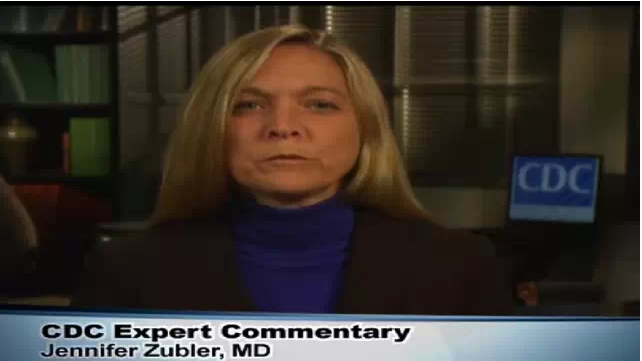來自于美國疾病預防控制中心的兒科醫生和顧問的報告《切莫忽略兒童的發育篩查》
\ 大家好!我是Zubler博士,是美國疾病預防控制中心的兒科醫生和顧問。美國疾病控制與預防中心最近的一份報告顯示,兒童發育篩查率很低——在 2007年,篩查率僅有20%,自那以后,篩查率有所改善,上升至30%- -50%左右,這個數字取決于你是否像孩子的父母或兒科醫生詢問過相關情況。然而,這意味著大約一半的孩子沒有根據美國兒科學會建議的日期進行發育篩查。(美國兒科學會推薦在兒童的在9月齡、18月齡、24或30月齡時進行發育篩查。)

發育障礙和延遲是很常見的,6個孩子就有1個存在這種情況。這樣的數字很可能說明每個兒童診所或兒保科門診中都會碰到發育障礙的兒童。
兒保科醫生在提供發育篩查方面起著至關重要的作用。篩查可以識別早期的發育遲緩,幫助兒童接受進一步的幫助不僅,可以教他們新的生活技能,而且可以幫助他們充分激發他們的潛力。與父母獨自進行發育監測相比,正式的篩查效果要好得多。如果發育遲緩能夠在早期被識別,那么干預措施也就可以相應的早期啟動,對發育遲緩的兒童來說預后也會更好。
我們需要改善現有的發育篩查率。大多數兒保科醫生都認同這一點,然而,大多數兒保科門診卻不執行常規發育篩查。是什么造成這種情況呢?
門診人流量太大,人均就診時間太短被認為為目前開展常規發育篩查的最大障礙。臨床醫生發現父母是非常歡迎實施發育篩查的,在施行時均給予了積極的反應。大多數發育篩查工具只需要幾分鐘就能完成,而且,由家長完成的篩查工具并不會增加兒保科醫生對單個病人就診時間的延長。實踐發現,實施常規篩查比想象的要容易,而且接受了篩查的兒童父母普遍對實施篩查的兒保科滿意度提高不少。
然而,如何有效地將常規發育篩查融入到繁忙的工作中對我們來說可能是一個挑戰。有一些方法可以兒保科醫生減輕負擔,提高我們識別這六分之一發育障礙兒童的能力。以下是一些小建議:
首先,教育孩子的父母為什么要做發育篩查以及何時應該帶孩子去進行發育篩查,使家長更易接受常規發育篩查。這類教育宣教可以通過網絡進行,在父母的工作時間許可的范圍內,可以在辦公室網絡進行訪問,并設置自動提醒功能。
第二,請家長在進行就診前自行完成篩查問卷,比如事先在家完成或在候診的時間內完成。
第三,培訓兒保醫師使之了解發育篩查的重要性,在父母進入診室的時候給他們分發紙張或電子形式的篩查問卷。此外,需培訓兒保醫師對篩選問卷進行評分的能力,或者也可以電子化處理問卷最終結果。然后,兒保科醫生就可以根據問卷結果與父母討論發育的情況,并給予相應的指導。
早期識別發育問題是兒童保健中很關鍵的一部分。許多醫療機構已經成功實現常規發育篩查,相信你也可以做到。
注:以上內容翻譯自美國疾病預防控制中心的Jen Zubler博士的采訪錄像
附:采訪原稿:
Hello. I am Dr Jen Zubler, a practicing pediatrician and a consultant for the Centers for Disease Control and Prevention.A recent CDC report shows that the rate of childhood developmental screening is low—about 20% in 2007. Screening rates have improved since then, to about30%-50%, depending on whether you ask parents or pediatricians. However, this means that about half of children are not receiving the American Academy of Pediatrics recommended developmental screening at 9, 18, and 24 or 30 months of age.
Developmental disabilities and delays are surprisingly common, affecting 1 in 6 children. With numbers like this, it's very likely that children with unidentified developmental disabilities are seen in every pediatric practice.
Pediatric providers play an important role in conducting developmental screening. Screening can identify developmental delays early, helping children receive services that can teach them new skills and help them reach their full potential. And formal screening does a better job of this than does developmental surveillance alone. The earlier atypical development is recognized, the earlier interventions can be started, and the better the outcome for children with developmental delays.
We need to improve our rates of developmental screening. Most pediatric providers agree with this, yet most offices do not perform universal developmental screening. Why this discrepancy?
Lack of time is often cited as the biggest barrier to routine developmental screening. However, physicians have reported positive responses from parents when screening was implemented. Most developmental screening tools take only a few minutes to complete, and the use of a parent-completed screener did not increase the average office visit time.Providers in one busy urban practice found that implementing routine screening was easier than expected, and parents of children who were screened reported greater satisfaction with their child's medical care.
Nevertheless, efficiently integrating routine developmental screening into a busy practice can be challenging. There are some ways to ease the burden on pediatric providers to screen all children,improving our ability to identify the 1 in 6 with developmental disabilities.Here are a few tips to make this easier:
First, make developmental screening a routine expectation by educating parents about why and when developmental screening will be done. Education can be done on practice websites, on in-office displays, when parents schedule well-child visits, and through automated appointment reminders. Second, ask parents to complete the screener at home before the appointment, in the waiting room or in the exam room while they are waiting for the provider. And third, train staff on the importance of developmental screening and train them to distribute screeners in paper or electronic form when parents check in. Staff can also be trained to score the screening tool, or scoring can be done electronically. Pediatric providers can then discuss the results with parents as part of their typical discussions about developmental milestones and anticipatory guidance.
For resources on developmental screening,visit Birth to 5: Watch Me Thrive!. You can also find free tools, such as"Learn the Signs. Act Early." milestone checklists in English and Spanish, to help you and families you serve track children development. Visit our website for more information.
Identifying developmental concerns early is a critical part of optimal care for children. Many practices have successfully implemented universal developmental screening; yours can too.








